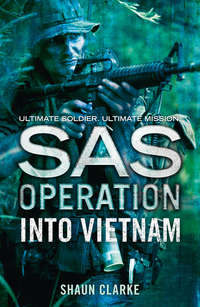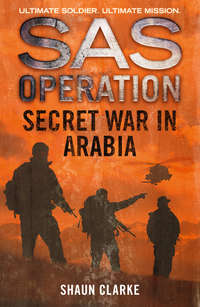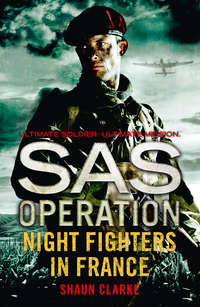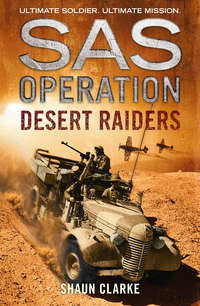
Полная версия
Sniper Fire in Belfast
The men were scattered all around the lounge, not speaking, pretending not to know one another. When the boat docked and the passengers started disembarking, they shuffled out of the lounge with them, but remained well back or took up positions on the open deck, waiting for the last of the passengers to disembark.
Looking in both directions along the quayside, Martin saw nothing moving among the gangplanks tilted on end, scattered railway sleepers and coils of thick mooring cables. The harbour walls rose out of the filthy black water, stained a dirty brown by years of salt water and the elements, supporting an ugly collection of warehouses, huts, tanks and prefabricated administration buildings. Unmanned cranes loomed over the water, their hooks swinging slightly in the wind blowing in from the sea. Out in the harbour, green and red pilot lights floated on a gentle sea. Seagulls circled overhead, crying keenly, in the grey light of morning.
Having previously been told to wait on the deck until their driver beckoned to them, the men did so. The last of the other passengers had disembarked when Martin, glancing beyond the quayside, saw a green minibus leaving its position in the car park. It moved between rows of empty cars and the trailers of articulated lorries, eventually leaving the car park through gates guarded by RUC guards wearing flak jackets and armed with 5.56mm Ruger Mini-14 assault rifles. When the minibus reached the quayside and stopped by the empty gangplank, Martin knew that it had to be their transport.
As the driver, also wearing civilian clothing, got out of his car, Sergeant Lampton made his way down the gangplank and spoke to him. The man nodded affirmatively. A group of armed RUC guards emerged from one of the prefabricated huts along the quayside to stand guard while the men’s bergen rucksacks were unloaded and heaped up on the quayside. There were no weapons; these would be obtained from the armoury in the camp they were going to. All of the men were, however, already armed with 9mm Browning High Power handguns, which they were wearing in cross-draw holsters under their jackets.
When the last of the bergens had been unloaded, Lampton turned back and waved the men down to the quayside. Martin went down between Ricketts and Gumboot, following the first into the back of the minibus, where a lot of the men were already seated. Gumboot was the last to get in. When he did so, one of the RUC guards slid the door shut and the driver took off, heading out into the mean streets of Belfast.
‘Can we talk at last?’ Gumboot asked. ‘I can’t stand this silence.’
‘Gumboot wants to talk,’ Jock McGregor said. ‘God help us all.’
‘He’s talking already,’ Ricketts said. ‘I distinctly heard him. Like a little mouse squeaking.’
‘Ha, ha. Merely attempting to break the silence, boss,’ retorted Gumboot, ‘and keep us awake until we basha down. That boat journey seemed endless.’
‘You won’t get to basha down until tonight, so you better keep talking.’
‘Don’t encourage him,’ Jock said. ‘It’s too early to have to listen to his bullshit. I’ve got a headache already.’
‘It’s the strain of trying to think,’ Gumboot informed him. ‘You’re not used to it, Jock.’
His gaze moved to the window and the dismal streets beyond, where signs saying NO SURRENDER! and SMASH SINN FEIN! fought for attention with enormous, angry paintings on the walls of buildings, showing the customary propaganda of civil war: clenched fists, hooded men clasping weapons, the various insignia of the paramilitary groups on both sides of the divide, those in Shankill, the Falls Road, and the grim, ghettoized housing estates of West Belfast.
‘How anyone can imagine this place worth all the slaughter,’ Taff Burgess said, studying the grim, wet, barricaded streets, ‘I just can’t imagine.’
‘They don’t think it’s worth it.’ Jock said. ‘They’re just a bunch of thick Paddies and murderous bastards using any excuse.’
‘Not quite true,’ Martin said. Brought up by strictly methodist parents in Swindon, not religious himself, but highly conscious of right and wrong, he had carefully read up on Ireland before coming here and was shocked by what he had learnt. ‘These people have hatreds that go back to 1601,’ he explained, ‘when the Catholic barons were defeated and Protestants from England arrived by boat to begin colonization and genocide.’
‘1601!’ Gumboot said in disgust. ‘The Paddies sure have fucking long memories.’
The Catholics were thrown out of their own land,’ Martin continued, feeling a little self-conscious. ‘When they returned to attack the Protestants with pitchforks and stones, the British hanged and beheaded thousands of them. Some were tarred with pitch and dynamite, then set on fire.’
‘Ouch!’ Taff exclaimed.
‘When the Catholics were broken completely,’ Martin continued in a trance of historical recollection, ‘their religion was outlawed, their language was forbidden, and they became untouchables who lived in the bogs below the Protestant towns. They endured that for a couple of hundred years.’
‘You’re still talking about centuries ago,’ Gumboot said. ‘That’s a long time to hold those old grudges. Might as well go back to the garden of Eden and complain that you weren’t given a bite of the fucking apple.’
‘It’s not the same thing,’ Martin insisted, feeling embarrassed that he was talking so much, but determined to get his point across. ‘We’re not talking about something that happened just once, centuries ago, but about something that’s never really stopped.’
‘So the poor buggers were thrown out of their homes and into the bogs,’ Taff Burgess said with genuine sympathy, his brown gaze focused inward. ‘So what happened next, then?’
‘Over the centuries, Belfast became a wealthy industrial centre, dominated entirely by Protestants. But the Catholics started returning to the city about 1800, and naturally, as they were still being treated like scum, they were resentful and struck back.’
‘Nothing like a bit of the old “ultra-violence” to get out your frustrations,’ said Gumboot, grinning wickedly. ‘Remember that film, A Clockwork Orange? Fucking good, that was.’
‘Race riots and pogroms became commonplace,’ Martin continued, now getting into his stride. ‘It burst out every five or six years, eventually leading to the formation of Catholic and Protestant militia. Civil war erupted in 1920. In 1921 the country was partitioned, with the six provinces of the North becoming a British statelet, ruled by its Protestant majority.’
‘Big fucking deal,’ Gumboot said as the minibus passed through a street of small terraced houses, many with their windows and doorways bricked up. Here the signs said: PROVOS RULE! and BRITS OUT! Even at this early hour of the morning there were gangs of scruffy youths on the street corners, looking for trouble. ‘What was so bad about that?’
‘Well, Catholics couldn’t get jobs and their slums became worse,’ Martin explained. ‘The electoral laws were manipulated to favour owners of property, who were mostly Protestants. Even after more riots in the thirties and forties, nothing changed. Finally, in 1969, the Catholics took to the streets again, where they were attacked by Protestant police and vigilantes. This time they refused to lie down and the whole city went up in flames.’
‘I remember that well,’ Jock said. ‘I saw it on TV. Mobs all over the place, thousands fleeing from their homes, and Army tanks in the streets. I could hardly believe what I was seeing. A civil war on British soil!’
‘Right,’ Ricketts chipped in. ‘And by the time they were done, you had Catholics on one side, Protestants on the other, and the British equivalent of the Berlin Wall between.’
He pointed out of the window of the van, where they could see the actual ‘Peace Line’: a fifteen-foot-high wall topped with iron spikes, cutting across roads, through rows of houses, and, as they had all been informed, right across the city.
‘Which led,’ Sergeant Lampton added laconically, ‘to the birth of the masked IRA terrorist and his opposite number, the loyalist terrorist in balaclava.’
‘And here we are, caught in the middle,’ Ricketts said, ‘trying to keep the peace.’
‘Trying to stay alive,’ Gumboot corrected him, ‘which is all it comes down to. I’ve only got one aim in this piss-hole – to make sure that none of the bastards on either side puts one in my back. Fuck all the rest of it.’
The minibus was now leaving the city to travel along the M1, through rolling hills which, Martin noticed, were dotted with British Army observation posts. Even as he saw the distant OPs, an AH-7 Lynx helicopter was hovering over one of them to insert replacements and take off the men already there. The OPs, Martin knew, were resupplied with men and equipment only by air – never by road.
‘Hard to believe that’s a killing ground out there,’ Sergeant Lampton said. ‘If it wasn’t for the OPs on the hills, it would all seem so peaceful.’
‘It looked peaceful in Oman as well,’ Ricketts said, ‘until the Adoo appeared. It’s the same with those hills – except instead of Adoo snipers, you have the terrorists. They look pretty serene from down here, but you’re right – those are killing fields.’
Martin felt an odd disbelief as he looked at the lush, serene hills and thought of how many times they had been used to hide torture and murder. That feeling remained with him when the minibus turned off the motorway and made its way along a winding narrow lane to the picturesque village of Bessbrook, where the British army had taken over the old mill. Located only four miles from the border, it was a village with a strongly Protestant, God-fearing community – there was not a single pub – and it was presently living through a grim spate of sectarian killings.
As revenge for the killing by Protestant terrorists of five local Catholics, a splinter group calling itself the South Armagh Republican Action Force had stopped a local bus and gunned down eleven men, most of them from Bessbrook, who were on their way home after work. Only one passenger and the Catholic driver had survived. Since that atrocity, both Protestant and Catholic ‘death squads’ had been stalking the countryside of south Armagh, killing people wholesale. It was this, Martin believed, that had prompted the British government to publicly commit the SAS to the area. Yet now, as the minibus passed through the guarded gates of the old mill, he could scarcely believe that this pretty village was at the heart of so many murderous activities.
‘OK,’ Sergeant Lampton said when the minibus braked to a halt inside the grounds of the mill. ‘The fun’s over. All out.’
The side door of the vehicle slid open and they all climbed out into the Security Forces (SF) base as the electronically controlled gates whined shut behind them. The mill had been turned into a grim compound surrounded by high corrugated-iron walls topped by barbed wire. The protective walls were broken up with a series of regularly placed concrete sentry boxes under sandbagged roofs and camouflaged netting. An ugly collection of Portakabins was being used for accommodation and administration. RUC policemen, again wearing flak jackets and carrying Ruger assault rifles, mingled with regular Army soldiers. Saracen armoured cars and tanks were lined up in rows by the side of the motor pool. Closed-circuit TV cameras showed the duty operator in the operations room precisely who was coming or going through the main gates between the heavily fortified sangars.
‘Looks like a fucking prison,’ Gumboot complained.
‘Home sweet home,’ Sergeant Lampton said.
3
‘Settle down, men,’ Lieutenant Cranfield said when he had taken his place on the small platform in the briefing room, beside Captain Dubois and an Army sergeant seated at a desk piled high with manila folders. When his new arrivals had quietened down, Cranfield continued: ‘You men are here on attachment to 14 Intelligence Company, an intelligence unit that replaced the Military Reconnaissance Force, or MRF, of Brigadier Kitson, who was Commander of Land Forces, Northern Ireland, from 1970 to 1972. A little background information is therefore necessary.’
Some of the men groaned mockingly; others rolled their eyes. Grinning, Cranfield let them grumble for a moment, meanwhile letting his gaze settle briefly on familiar faces: Sergeants Lampton, Ricketts and Parker, as well as Corporal Jock McGregor and Troopers ‘Gumboot’ Gillis and Danny ‘Baby Face’ Porter, all of whom had fought bravely in Oman, before returning to act as Directing Staff at 22 SAS Training Wing, Hereford. There were also some recently badged new men whom he would check out later.
‘In March 1972,’ Cranfield at last began, ‘shortly after the Stormont Parliament was discontinued and direct rule from Westminster substituted, selected members of the SAS, mainly officers, were posted here as individuals to sensitive jobs in Military Intelligence, attached to units already serving in the province. Invariably, they found themselves in a world of petty, often lethal jealousies and division among conflicting agencies – a world of dirty tricks instigated by Military Intelligence officers and their superiors. The MRF was just one of those agencies, causing its own share of problems.’
Now Cranfield glanced at the newcomer, Martin Renshaw, who had endured Sergeant Lampton’s perfect impersonation of an Irish terrorist during the horrendous final hours of the RTI exercises during Continuation Training. What was more, he had done so without forgetting that it was only an exercise, unlike so many others, who were RTU’d as a result. According to his report, Renshaw was a serious young man with good technological training, pedantic tendencies, and heady ambitions.
‘As some of you have come straight from Oman,’ Cranfield continued, ‘it’s perhaps worth pointing out that certain members of the MRF were, like the firqats of Dhofar, former enemies who had been turned. Occasionally using these IRA renegades – known as “Freds” – as spotters, the MRF’s Q-car patrols identified many active IRA men and women, sometimes photographing them with cameras concealed in the boot of the car. Too often, however, MRF operations went over the top, achieving nothing but propaganda for the IRA.’
‘Just like the green slime,’ Gumboot said, copping some laughs from his mates and, as Cranfield noticed, a stony glance from his uneasy associate, the Army intelligence officer Captain Dubois.
‘Very funny, Trooper Gillis,’ Cranfield said. ‘Perhaps you’d like to step up here and take over.’
‘No, thanks, boss. Please continue.’
Cranfield nodded, secretly admiring Gumboot’s impertinence, which he viewed as a virtue not possessed by soldiers of the regular Army. ‘In 1972 a couple of embarrassing episodes led to the disbandment of Kitson’s organization. Number one was when a two-man team opened fire with a Thompson sub-machine-gun from a moving car on men standing at a Belfast bus stop. Though both soldiers were prosecuted, they claimed they’d been fired at first. The second was when the IRA assassinated the driver of an apparently innocuous laundry van in Belfast. This led to the revelation that the company that owned the van, the so-called Four Square Laundry, was actually an MRF front, collecting clothing in suspect districts for forensic examination.’
‘Proper dirty laundry,’ Jock McGregor said, winning a few more laughs.
‘Yes,’ Cranfield said, ‘it was that all right. Anyway, those two incidents caused a stir and brought an end to the MRF, which was disbanded early in 1973. But it soon became apparent that as the police, whether in or out of uniform, were soft targets for gunmen, a viable substitute for the MRF was required. This would require men who could penetrate the republican ghettos unnoticed, and who possessed keen powers of observation, quick wits, and even quicker trigger fingers.’
‘That’s us!’ the normally quiet Danny Porter, ‘Baby Face’, said with a shy grin.
‘Not at that time,’ Cranfield replied, ‘though certainly the training officer for the new team was then serving with 22 SAS. In fact, the new unit, formed at the end of 1973, was 14 Intelligence Company. While it was the job of that company to watch and gather information about the IRA, the SAS’s function was to act on the intelligence supplied by them and take action when necessary.’
‘Excuse me, boss,’ Taff Burgess asked, putting his hand in the air like an eager schoolboy. ‘Are you saying that 14 Intelligence Company never gets involved in overt action against the IRA? That they’ve never had, or caused, casualties?’
‘No. They have suffered, and have caused, casualties – but only when spotted and usually only when the terrorist has fired first. Their function is to gather intelligence – not to physically engage the enemy. That’s our job. To do it within the law, however, we have to know exactly who and what we’re involved with here in the province.’
Cranfield nodded at the Army sergeant standing beside the intelligence officer. The sergeant started distributing his manila folders to the SAS troopers sitting in the chairs. ‘The information I’m about to give you,’ Cranfield said, ‘is contained in more detail in those folders. I want you to read it later and memorize it. For now, I’ll just summarize the main points.’
He paused until his assistant, Sergeant Lovelock, had given out the last of the folders and returned to his desk.
‘At present there are fourteen British Army battalions in Northern Ireland, each with approximately 650 men, each unit deployed in its own Tactical Area of Responsibility, or TAOR, known as a “patch”. As the RUC’s B Special Reserve were highly suspect in the eyes of the Republicans, their responsibilities have been handed over to the Ulster Defence Regiment, a reserve unit composed in the main of local part-timers. Unfortunately the UDR is already deeply unpopular with the Catholics, who view its members as hard-line loyalists. Most Army commanders are no more impressed by the UDR, believing, like me, that it’s dangerous to let part-time Protestant reservists into hard Republican areas.’
‘Are they reliable otherwise?’ Ricketts asked.
‘Many of us feel that the Royal Ulster Constabulary is more reliable than the UDR, though we certainly don’t believe policemen are capable of taking complete charge of security. This is evidenced by the fact that RUC officers often refuse to accompany the Army on missions – either because they think it’s too risky or because they feel that their presence would antagonize the locals even more than the Army does.’
‘That sounds bloody helpful,’ Jock McGregor said sourly.
‘Quite. In fact, in strongly Republican areas the RUC have virtually ceded authority to us. They do, however, have two very important departments: the Criminal Investigations Department, or CID, in charge of interrogating suspects and gathering evidence after major incidents; and the Special Branch, or SB, which runs the informer networks vital to us all. They also have a Special Patrol Group, or SPG, with mobile anti-terrorist squads trained in the use of firearms and riot control. We can call upon them when necessary.’
‘What about the police stations?’ Lampton asked.
‘Sixteen divisions – rather like Army battalions – in total. Some are grouped into each of three specific regions – Belfast, South and North – each with an assistant chief constable in charge, with as much authority as the Army’s three brigadiers. Those three chief constables report in turn to the chief constable at RUC HQ at Knock, east Belfast.’
‘Who calls the shots?’ Jock McGregor asked.
‘The regular Army and UDR battalions are divided between three brigade HQs – 29 Brigade in the Belfast area, 8 Brigade in Londonderry and 3 Brigade in Portadown, the latter responsible for covering the border. The Brigade Commanders report to the Commander Land Forces, or CLF, at Lisburn, the top Army man in Ulster. He has to answer to the General Officer Commanding, or GOC, who, though an Army officer, is also in charge of the RAF and Royal Navy detachments in the province. He’s also responsible for co-ordination with the police and ministers. The HQNI, or Headquarters Northern Ireland, is located in barracks at Lisburn, a largely Protestant town just outside Belfast that includes the HQ of 39 brigade. Regarding the role of 14 Intelligence Company in all this, I’ll hand you over to Captain Dubois.’
Slightly nervous about talking to a bunch of men who would feel resentful about working with the regular Army, Captain Dubois coughed into his fist before commencing.
‘Good morning, gentlemen.’ When most of the Troop just stared steadily at him, deliberately trying to unnerve him, he continued quickly: ‘Like the SAS, 14 Intelligence Company is formed from soldiers who volunteer from other units and have to pass a stiff selection test. It recruits from the Royal Marines as well as the Army, though it looks for resourcefulness and the ability to bear the strain of long-term surveillance, rather than the physical stamina required for the Special Air Service.’
Applause, cheers and hoots of derision alike greeted Dubois’ words. Still not used to the informality of the SAS, he glanced uncertainly at Cranfield, who grinned at him, amused by his nervousness.
‘The unit has one detachment with each of the three brigades in Ulster,’ Dubois continued. ‘Each consists of twenty soldiers under the command of a captain. We operate under a variety of cover names, including the Northern Ireland Training Advisory Team, or NITAT, and the Intelligence and Security Group, or Int and Sy Group. Like the original MRF, most of our work involves setting up static OPs or the observation of suspected or known terrorists from unmarked Q cars. These have covert radios and concealed compartments for other weapons and photographic equipment. Most of the static OPs in Belfast are manned by our men and located in both Republican and Loyalist areas, such as Shankill, the Falls Road and West Belfast’s Turf Lodge and the Creggan. You men will be used mainly for OPs in rural areas and observation and other actions in Q cars here in Belfast. You will, in effect, be part of 14 Intelligence Company, doing that kind of work, initially under our supervision, then on your own.’
‘Armed?’ Danny Porter asked quietly.
‘Yes. With weapons small enough to be concealed. These include the 9mm Browning High Power handgun and, in certain circumstances, small sub-machine-guns.’
‘What’s our brief regarding their use?’
‘Your job is observation, not engagement, though the latter isn’t always avoidable. Bear in mind that you won’t be able to pass yourselves off as locals, eavesdropping in Republican bars or clubs. Try it and you’ll soon attract the curiosity of IRA sympathizers, some as young as fourteen, looking as innocent as new-born babies, but almost certainly in the IRA youth wing. If one of those innocents speaks to you, you can rest assured that he’ll soon be followed by a hard man of more mature years. Shortly after the hard man comes the coroner.’
Thankfully, the men laughed at Dubois’ sardonic remark, encouraging him to continue in a slightly more relaxed manner.
‘For that reason we recommend that you don’t leave your Q car unless absolutely necessary. We also recommend that you don’t try using an Irish accent. If you’re challenged, say no more than: “Fuck off!” And say it with conviction.’ When the men laughed again, Dubois said: ‘I know it sounds funny, but it’s actually the only phrase that might work. Otherwise, you cut out of there.’
‘At what point do we use our weapons?’ the new man, Martin Renshaw, boldly asked.
‘When you feel that your life is endangered and there’s no time to make your escape.’
‘Do we shoot to kill?’ ‘Baby Face’ asked.
‘Shooting to wound is a risky endeavour that rarely stops a potential assassin,’ Lieutenant Cranfield put in. ‘You shoot to stop the man coming at you, which means you can’t take any chances. Your aim is to down him.’
‘Which means the heart.’
‘Yes, Trooper.’
‘Is there actually a shoot-to-kill policy?’ Ricketts asked.







